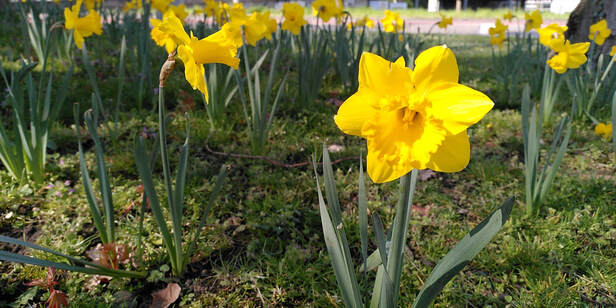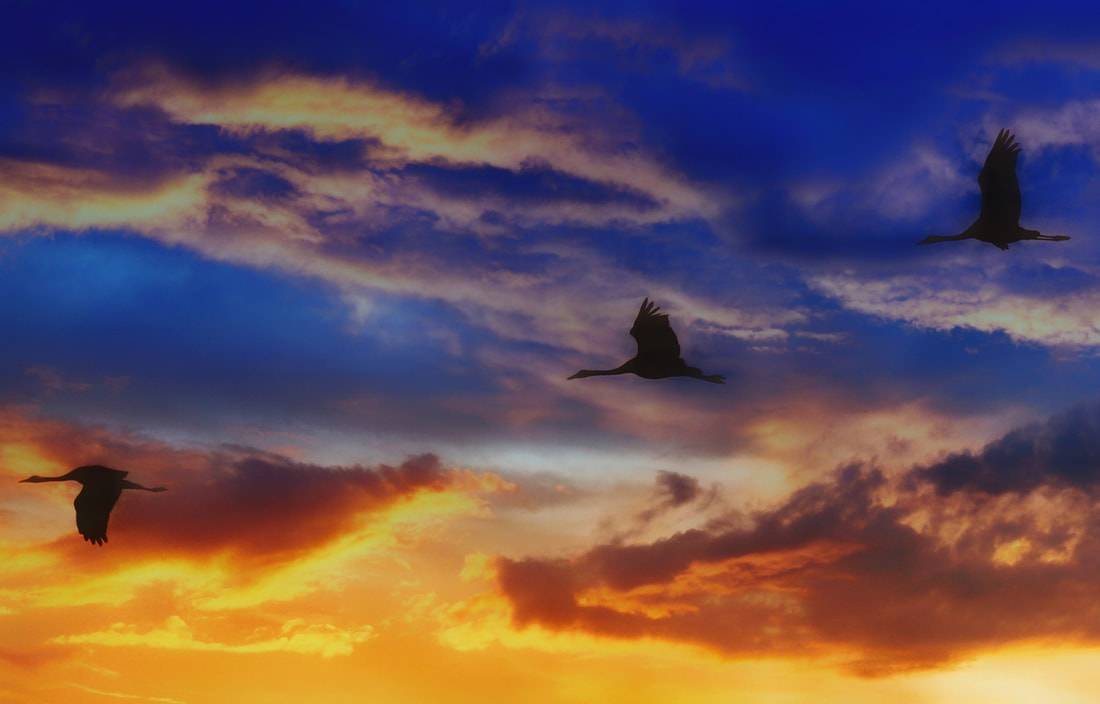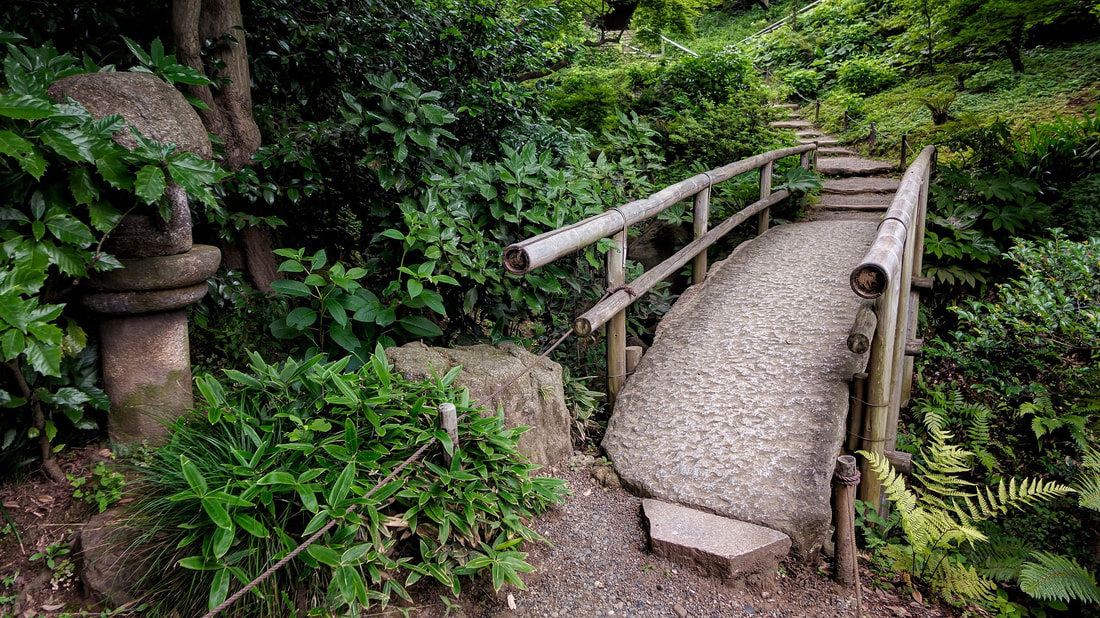I wondered lonely as a cloud
That floats on high o'er vales and hills,
When all at once I saw crowd,
A host, of golden daffodils;
Beside the lake, beneath the trees,
Fluttering and dancing in the breeze.
Continuous as the stars that shine
And twinkle on the milky way,
They stretched in never-ending line
Along the margin of a bay:
Ten thousand saw I at a glance,
Tossing their heads in sprightly dance.
The waves beside them danced;
but they
Out-did the sparkling waves in glee:
A poet could not but be gay,
In such a jocund company:
I gazed--and gazed--but little thought
What wealth the show to me had brought:
For oft, when on my couch I lie
In vacant or in pensive mood,
They flash upon the inward eye
Which is the bliss of solitude;
And then my heart with pleasure fills,
And dances with the daffodils.
William Wordsworth (1804)
It is a cool Spring day; the sky is blue and the sun is shining. Yesterday, the sky was grey and it was snowing. On the ground the snow is gone but the coolness prevails. Last week, it was dry, warm and sunny; all the plants were blossoming. I heard the exclamations of joy from people around me of how beautiful and warm it was, but also the apprehension of how dry it was for the plants. I listen and observe. I note that it is Spring, a time of extreme change. The weather of this time of year can change from one end of the spectrum to the other in a day, which we experienced this past week.
What has caught my eye and my consciousness are the Daffodils; those yellow, golden rays of sunlight that have burst through the Earth and prevailed through sun, dryness, rain, snow and cold. As a young student in a former British colony, I learned the poems of the British Romantic poets, such as William Wordsworth, which I could not really understand then since I lived in the tropics and had never experienced real Daffodils growing in the early Spring. What a wonder they are!
Daffodils or Narcissus are bulbous plants, that stay dormant for more than half the year. Then at some point in time in late winter, they manifest their first green, pointy shoots out of the Earth. Every ray of sunshine nurtures their inching-shoots out of this fantastically-designed bulb, that not only nourishes with food, but also protects this being like a cocoon as it develops its bud into flower. We admire how humans design and create intricate things but look at this "simple" bulb that keeps growing and receding year after year, even if we do not really put much attention or care to it, in the most extreme of temperatures (between 30-35 degrees Celsius difference). Through its long leaves, this being gets enough food and energy to go into dormancy from Summer to the end of Winter. I read that bulbous plants, including the Daffodils, have been in existence since the Miocene geological epoch, between 23.03 to 5.33 million years ago, as a result of the decrease in global temperatures. Crazy, amazing ancient technology that is still functioning!
Now, every time I pass by a troop of daffodils dancing in the breeze under a tree, I recite this lovely over-200-year-old Wordsworth homage to some very ancient beings, who not only impress me with their bell-shaped-flair-skirted fair blossoms but every aspect of their existence, most especially their resilience to the snow, the heat and the changes of Spring.
Image by Elaine




 RSS Feed
RSS Feed